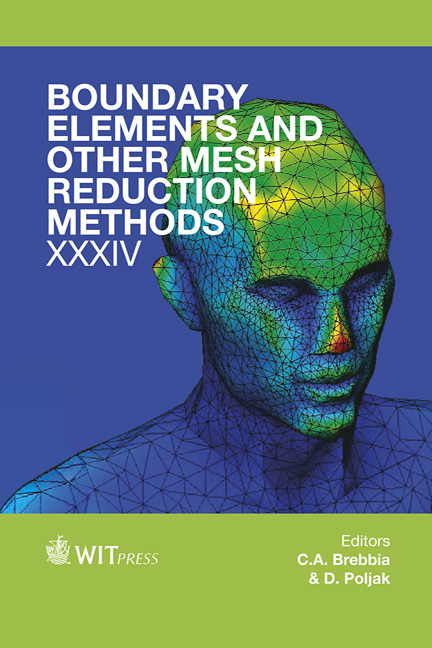A Boundary Element Approach To Buckling Of General Laminates
Price
Free (open access)
Transaction
Volume
53
Pages
11
Page Range
145 - 155
Published
2012
Size
402 kb
Paper DOI
10.2495/BE120131
Copyright
WIT Press
Author(s)
S. Syngellakis
Abstract
Laminates, comprising plies stacked in various orientations relative to their principal material frames of reference, generally exhibit coupling between their in-plane displacements and transverse deflection under any loading conditions. The main theme of this paper is the development of integral equations for the bifurcation buckling analysis of laminates taking into account this coupling. The formulation of the extensional problem is based on the stress function concept, which results in constitutive relations and a field equation mathematically equivalent to those of the plate bending problem. This has the advantage of using the same form of fundamental solution, similar boundary and domain modelling as well as the development of common algorithms for the solution of the two coupled problems. Modelling approaches for dealing with irreducible domain integrals arising from both extension-flexure coupling and geometric nonlinearity are presented. Keywords: laminates, bending-extension coupling, buckling, boundary elements. 1 Introduction The design of structural components made of composites can be tailored to meet the specific demands of a particular application by making optimum use of available materials. The mechanical behaviour of flat laminates, in particular, depends on ply orientation, number of plies in a given direction, thickness of individual plies, type of ply and the ply stacking sequence. The latter generally causes coupling between the transverse deflection and the in-plane displacements of a laminate. This coupling is absent only in the special case of \“balanced” laminates in which plies are symmetrically arranged with respect to the middle plane of the plate. The coupling effects have been taken into account in the
Keywords
laminates, bending-extension coupling, buckling, boundary elements.





